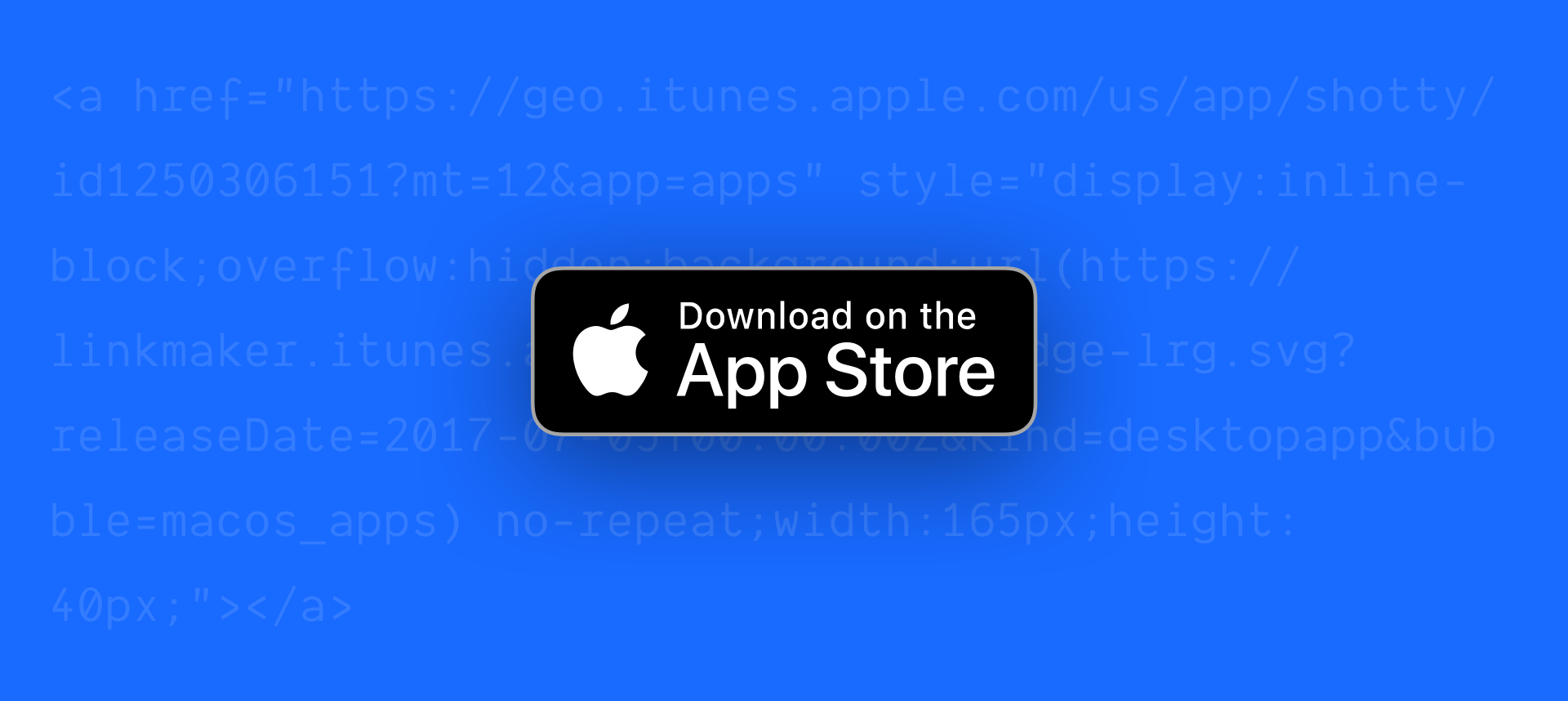Quickly grab motion curves for your CSS transitions.
Read MoreDesigning in hard mode
Why you shouldn’t rely on prototyping tools.
Read MoreHow to transition placeholder text into a label in React (Floating label inputs)
A tutorial showing how to build a floating label input in React.
Read MorePassword Reset in GraphQL
My working notes while building a GraphQL server.
Read MoreShotty Dark Mode Is Out Today!
I made some fun updates to the Shotty website to celebrate the launch of dark mode. Website built with Gatsby.
Read MoreTutorial: How to add an official "Download on the App Store" badge to your website in 3 steps
If you’re selling an app, you’ll want to use the official “Download on the App Store” button provided by Apple. This will give you more credibility, so users know they’re dealing with a legit app approved by Apple. Luckily, you can add this button to your site by simple copy/pasting some HTML from Apples handy iTunes Link Maker Tool.
Read MoreReact talk: Recomposing your React application by Andrew Clark
Tutorial: How to use SVGs from Sketch in React
It’s easy to create SVGs in Sketch. But how do you get them into React so you can use them? Better yet, how can you use them in a way where you can change their color, shape, and other properties based on user input? It’s surprisingly easy.
Read MoreImproving the render method in TodoMVC
How Underscore's mapObject Works
In today's exercise I look at how the source code works for Underscore's mapObject function. I still need to figure out what the hell _.cb does. One step at a time.
Tutorial: How To Create a Range Of Numbers with Underscore.js (includes video)
With Underscore's range function, you can easily generate a range of numbers customized to your liking. You could do the same thing with a basic Javascript for loop, but _.range is a faster and easier to use alternative.
Read on for a tutorial on how to use range along with a video walkthrough of the source code.
Read MoreMastering Javascript Fundamentals: Scopes, locals, closures, globals
Summary:
Functions can always remember the variables they could see at creation.
They can see variables defined inside the function.
They can see variables defined in enclosing functions.







